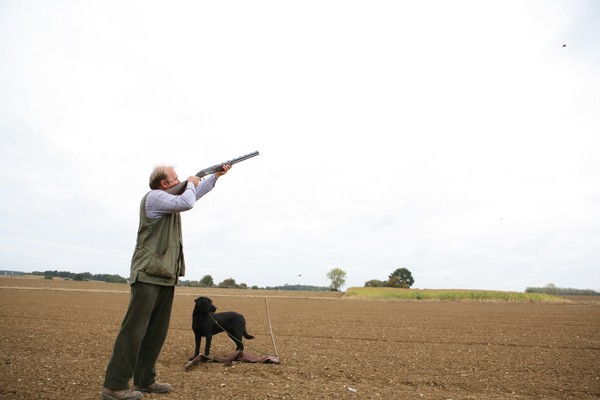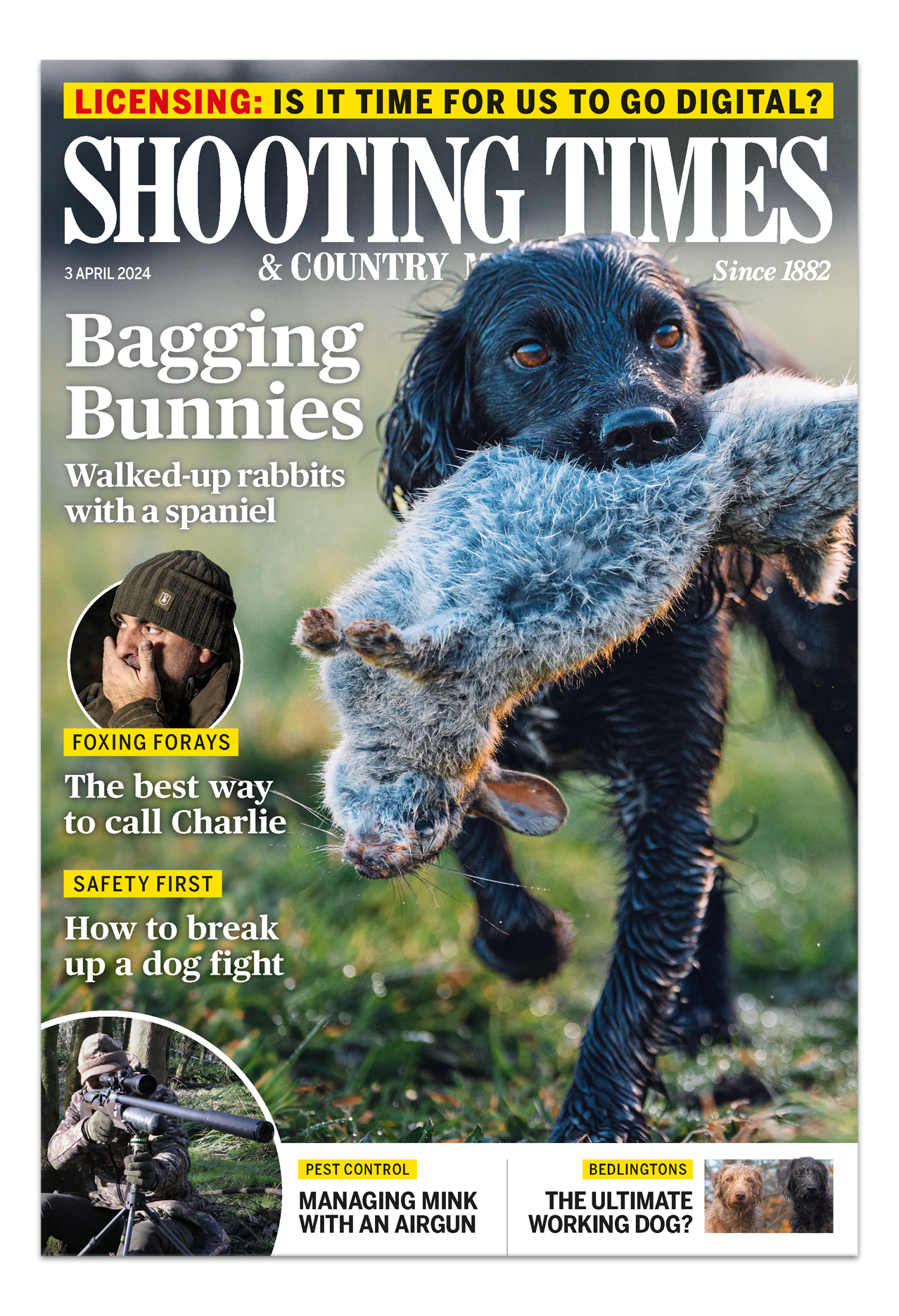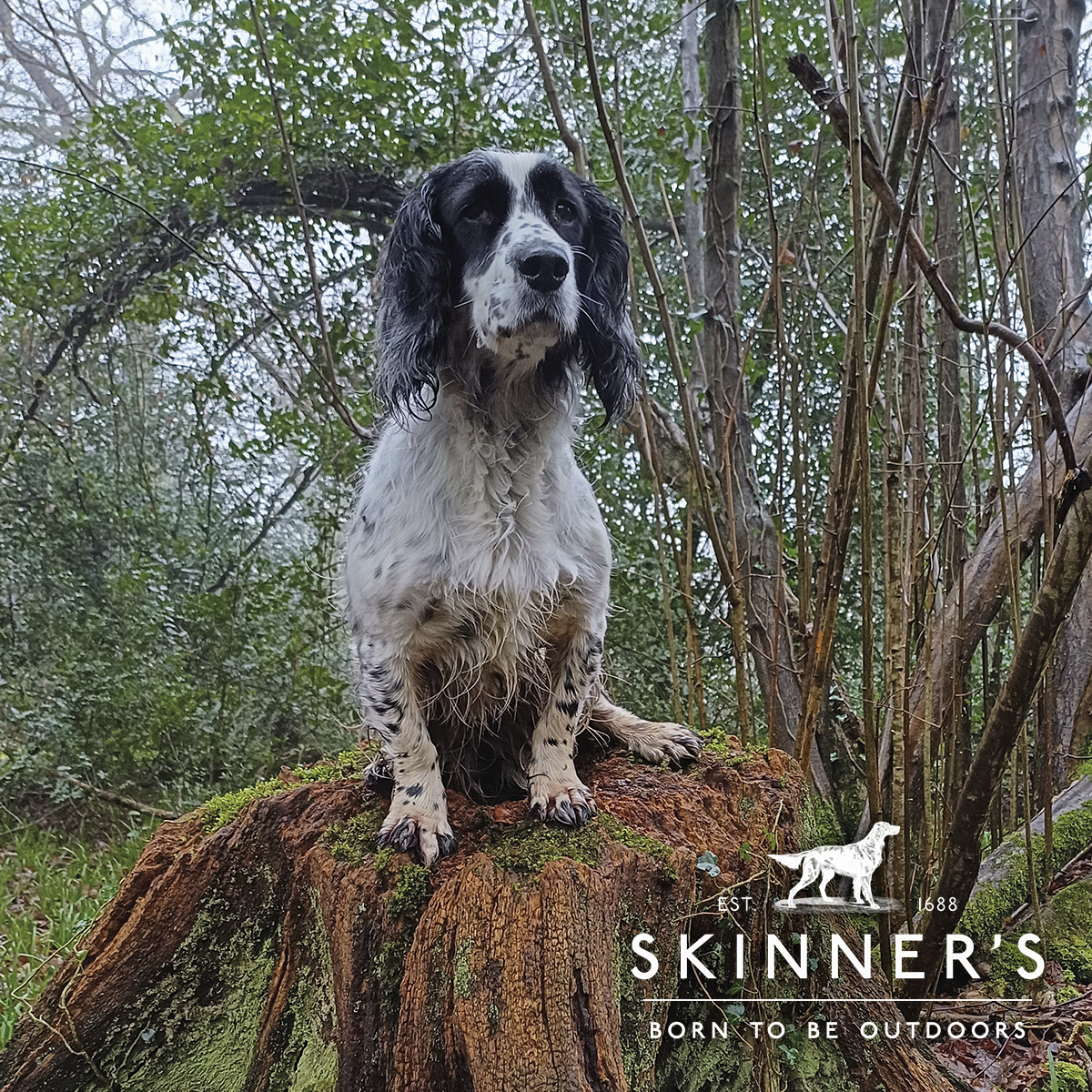The Ampton Shoot

September was drawing slowly towards its close. With the approach of the new month, the long, warm days of our Indian summer had turned suddenly more autumnal, and grey skies greeted me as I arrived at the Ampton estate in West Suffolk for a days partridge shooting with Peter Rushbrook.
Peter took over the shoot here on 1 February of this year and when I met him over coffee he was the first to admit that he was still getting to know several of the drives, though with many years of experience in running a quality partridge shoot on his family farm at Wattisham, in Suffolk, my guess is that it will not take him long to do so. Moreover, he has the experience of headkeeper Alan Hammond behind him. Alan has been at Ampton for no fewer than 22 years and it is fair to say that he knows every bush and every tree on the estate. He has a pretty good idea of how to work the partridge drives, too.
I knew I was among friends when I saw the smiling face of painter and wildfowler Julian Novorol and those of Mick Hall, of the Anglian Wildfowlers, and his wife, Mandy, for though partridges were on the menu for the day, four of the Guns were just as at home on the foreshore as on the wide, arable fields of Suffolk.
I just do half-a-dozen days at game a season, Julian told me, as we stood together on the first drive, our trigger fingers itching as we watched 150 greylag move off the stubbles and down on to Ampton lake. I had the first morning here at geese and I have had a flight or two on the saltings, but thats about it so far this year. Once the colder weather arrives, however, Julian will put down his brushes and palette and get afloat for much of the winter in his gunning punt. He, Mick and indeed Peter were already looking forward to their wildfowling expeditions to the Dornoch Firth, in the Highlands.
A barrage of shots
Experienced wildfowlers dont tend to miss many birds, and Julian took three nice partridges on the first drive, Kitchen Garden. But things dont always go according to plan and, just as the beaters had the bulk of the birds nicely blanked-in to the maize and mustard that grew on the gentle ridge above us, a roe deer crashed through the gamecrop, lifting almost every remaining bird in the drive. The sky darkened with partridges and for a few seconds there was a frenzied barrage of shots before the line fell silent.
Alan was luckier at the second drive, Cherry Tree, where a long belt of maize ended with a short front overlooking a freshly drilled field and, behind it, a large belt of woodland, rapidly turning brown and gold in the autumn drought. Peter placed the Guns, for I had already noticed that none of the drives was pegged. We look after all the Guns ourselves, he told me, as we walked out to our positions. Placing them where we want them gives me more options to move the Guns around when the wind is blowing from one direction or the other without them thinking that theyve been shuffled from a good peg on to a bad one. It also gives you the option, if somebodys had rather a light drive or two, to move things a bit to get them back into the shooting.
Nobody had a light drive at Cherry Tree. The birds flew as they should, in ones and twos throughout the drive, lifting as they crossed the line to head out over the treetops behind. It was an excellent partridge drive and the number of well-feathered pheasants coming out of the covercrop at its conclusion indicated good things to come later in the autumn.
As the whistle went, I caught up with beatkeeper Kate Campbell, who swapped Ayrshire for Ampton 18 months ago and has never looked back. The weathers certainly better down here, she told me as, together with picker-up Dixie Dykes, we collected the last couple of runners that had made it to the edge of the wood.
With 5,000 acres of light land, which is perfect for gameshooting, including 500 acres of woods and a further 110 acres of covercrops, there are no fewer than 40 partridge drives to choose from at Ampton, and there were plenty of birds that had still to be educated by a beating line. However, Peter and his son Charlie, who jointly run the shoot, do not restrict themselves only to driven days. One of Amptons specialities is small walked-up days for gundog training, in which four or five Guns plus half-a-dozen dog handlers can work a field of sugar beet or carrots exactly as they might if competing at a field trial. Alan is convinced that walked-up shooting early in the season is good for the birds and gets them flushing and flying quickly. The dog training days are popular both with clients from all over the UK and overseas guests. Peter even encourages falconry on the estate. He has a day with goshawks scheduled for later this season and arranges days for falconers on request. I support all fieldsports, he told me, though I only started getting interested in hunting when Tony Blair wanted to ban it.
We had two more drives before lunch, Cage Grove North and Case Grove, both following the formula of pushing covercrops of maize laced with mustard across one of the shallow valleys that occur in this part of East Anglia. The ground on which the Guns stood was mostly drilled, but lay parched under the drought, which had lasted for the best part of two months, and both the newly drilled cereals and the sugar beet crops cried out for water, as did the partridges. The only natural water on the estate is the lake and Alan told me that much of his time at present is spent carting water. We have a 1,000L
flask on every maize strip and I cart another 1,000L with me to keep them topped up. There are a lot of deer and other animals that rely on us putting water out, quite apart from the birds, he said.
Lunch was taken back at the shoots headquarters, Livermere Hall, which has 10 bedrooms and can cater for parties of up to 18 guests. The hall has been newly refurbished by Peter and Charlie and, as I watched, Julian unloaded a collection of his magnificent paintings with which to decorate the walls. During a relaxed lunch I talked to two of the other Guns, Michael Broughton, from Chelmsford, in Essex, and John Fowler, from Ashford, in Kent. Both were shooting with Holland & Holland guns, in Michaels case a superbly decorated 12-bore with engraved game scenes by Ken Hunt. John carried a 20-bore Royal, one of a pair that he bought from the late Lord Keith of Castleacre. He plans one day to take up the invitation to bring the guns back to their home estate for a day there.
An impressive display
Alan had saved the best until last. The late afternoon sun had burst through the layer of grey, flooding the distant vista across Ampton lake with bright September sunshine as we lined out across the parched carrot baulks at Stearns Belt, while at last the breeze had picked up. Here was a drive that had already been walked-up by a dog training party, so the birds were ready to get airborne as soon as the beaters put in an appearance. Moreover, it had the advantage of what is a rarity in this neck of the woods, a tall hedge over which the beating line was able to push the redlegs. They did so to perfection.
For maybe a quarter of an hour the Guns waited quietly as 30 acres of ground were blanked-in, and then the birds started coming. Alexandra Matthews took the first bird as it topped the hedge and flared, a real stunner that landed at her feet, and I watched in awe as Charlie Rushbrook picked some seemingly impossible shots, killing his birds cleanly right out to 50 yards behind the line. To my left, Julian was shooting exceptionally well and scored three right-and-lefts. The shooting was spread all down the line and lasted right until the conclusion of the drive, with little flushes of birds topping the hedge and its adjacent conifer belt, then lifting as they saw the Guns to make for real quality shooting. It was an impressive display both from Alan and his team on one side of the hedge and from the Guns on the other.
The day ended in the typically relaxed manner that is the hallmark of this shoot, with tea and cake back at Livermere Hall. Everybody was in high spirits from the final drive, and though some of the drives need to be pushed through a couple more times to sharpen up the partridges, there were
sufficient good quality birds to make this a really enjoyable day.
For information about shooting at Ampton, tel 01449 740463








